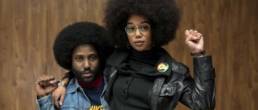
The Jim Crow era of racial discrimination and segregation dealt a heavy blow to the African-American film industry, which was already a fragile ecosystem developing in an adversarial world that considered its purveyors inferior solely because of the colour of their skin.
An era of silence stifled the ‘50s and the ‘60s, in particular, but it did not prevail. Martin Luther King Jr. rose up along with other brave and bold speakers, musicians, poets, and activists, having had more than enough. Their speeches and dreams of a better world shone a powerful light on American society. Tragedy did follow, as expected from a society embroiled in its fantasies of white supremacy, but better days came, as well.
Finally, the ‘70s saw a slow but steady rebirth of Black American cinema. This new generation of black filmmakers brought the truth of their experiences centre stage. From cinematic gems of the Blaxploitation era to Prince’s ‘Purple Rain’ (1984), the bountiful growth of Black Americans in cinema is worthy of notice and praise. Iconic movies came forth and extraordinary storytellers pushed boundaries. Most recently, we’ve seen a splendid expansion into genres otherwise monopolised by white filmmakers—see Ryan Coogler’s ‘Black Panther’ (2018) and Jordan Peele’s ‘Get Out’ (2017) as just two examples. But it’s important to observe the greats that came before them. The pioneers of the ‘80s, the ‘90s, and the ‘00s that reshaped the Black American narrative on the silver screen into something honest, breath-taking, heart-breaking, and undeniably unique.
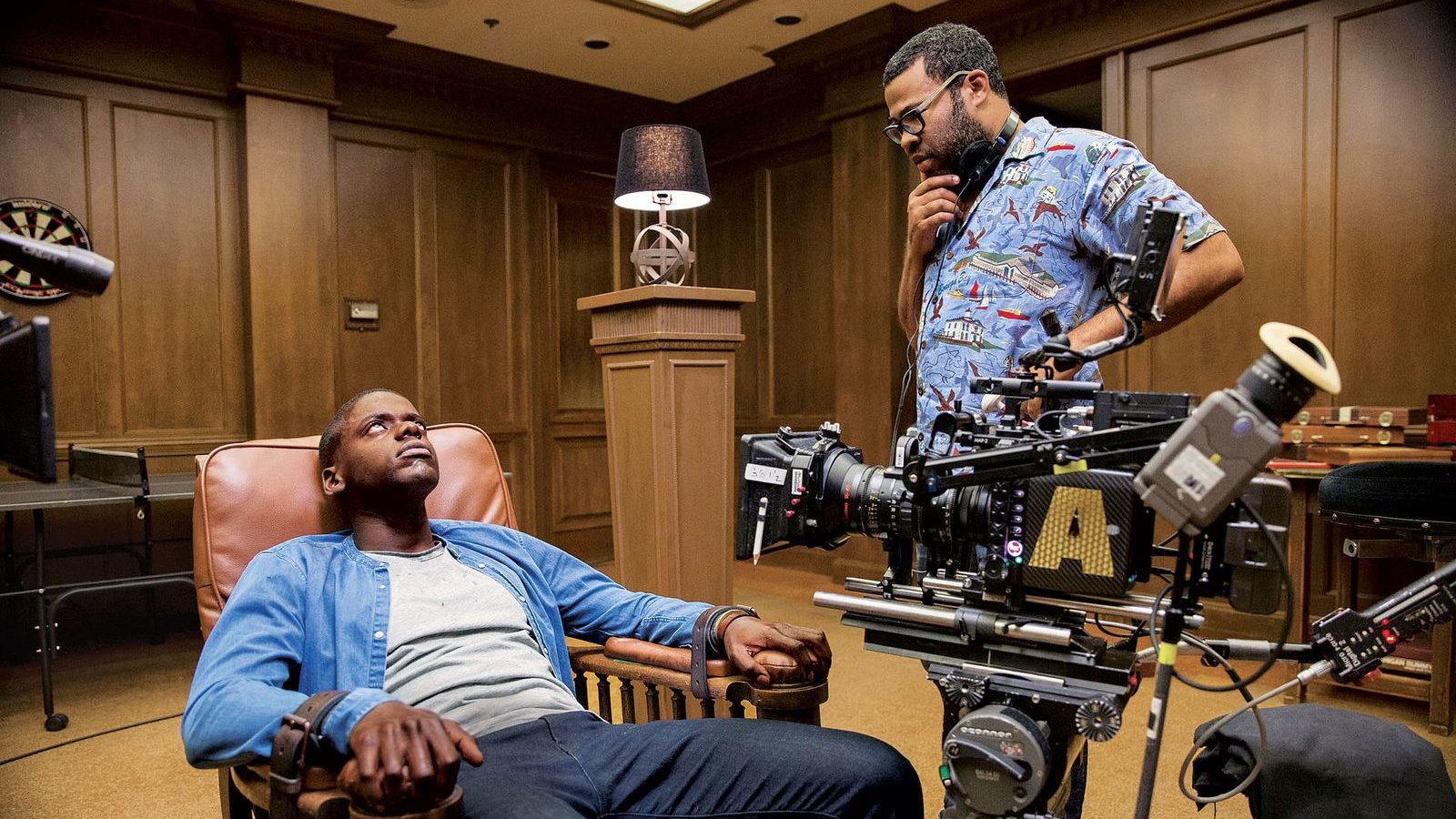 DANIEL KALUUYA AND JORDAN PEELE ON THE SET OF ‘GET OUT’ (2017), ©JUSTIN LUBIN/UNIVERSAL PICTURES
DANIEL KALUUYA AND JORDAN PEELE ON THE SET OF ‘GET OUT’ (2017), ©JUSTIN LUBIN/UNIVERSAL PICTURES
Forty Years of Black Masterpieces
There are plenty of illustrious titles to work with but, as usual, a selection must be made for the sake of brevity. One film that has withstood the test of time, over and over again, is Spike Lee’s ‘Do the Right Thing’ (1989). Its success is mainly owed to its sincerity and Mr Lee’s uncanny ability to deliver a wide range of characters without swerving into dangerous stereotype territory. With the United States always described as a melting pot of sorts—albeit idealistically, it’s no surprise that the eminent Black director chose New York as the ‘melting pot’ for his colourful and beautifully diverse characters before he brings it all to a boiling point.
The story is brilliant in its navigation of inner-city life and the struggles brought forth by racism—the latter a defining trait of Black American existence. ‘Do the Right Thing’ examines the very ethics of violence and prejudice before it offers a startling truth: good and bad are abstract moral constructs, at best. Few people are truly evil, yet so many have the potential for kindness. Mr Lee tells us that racism can be overcome, that there is beauty in diversity, and that Black Americans have been looked down upon for far too long. It was as relevant in 1989 as it is today.
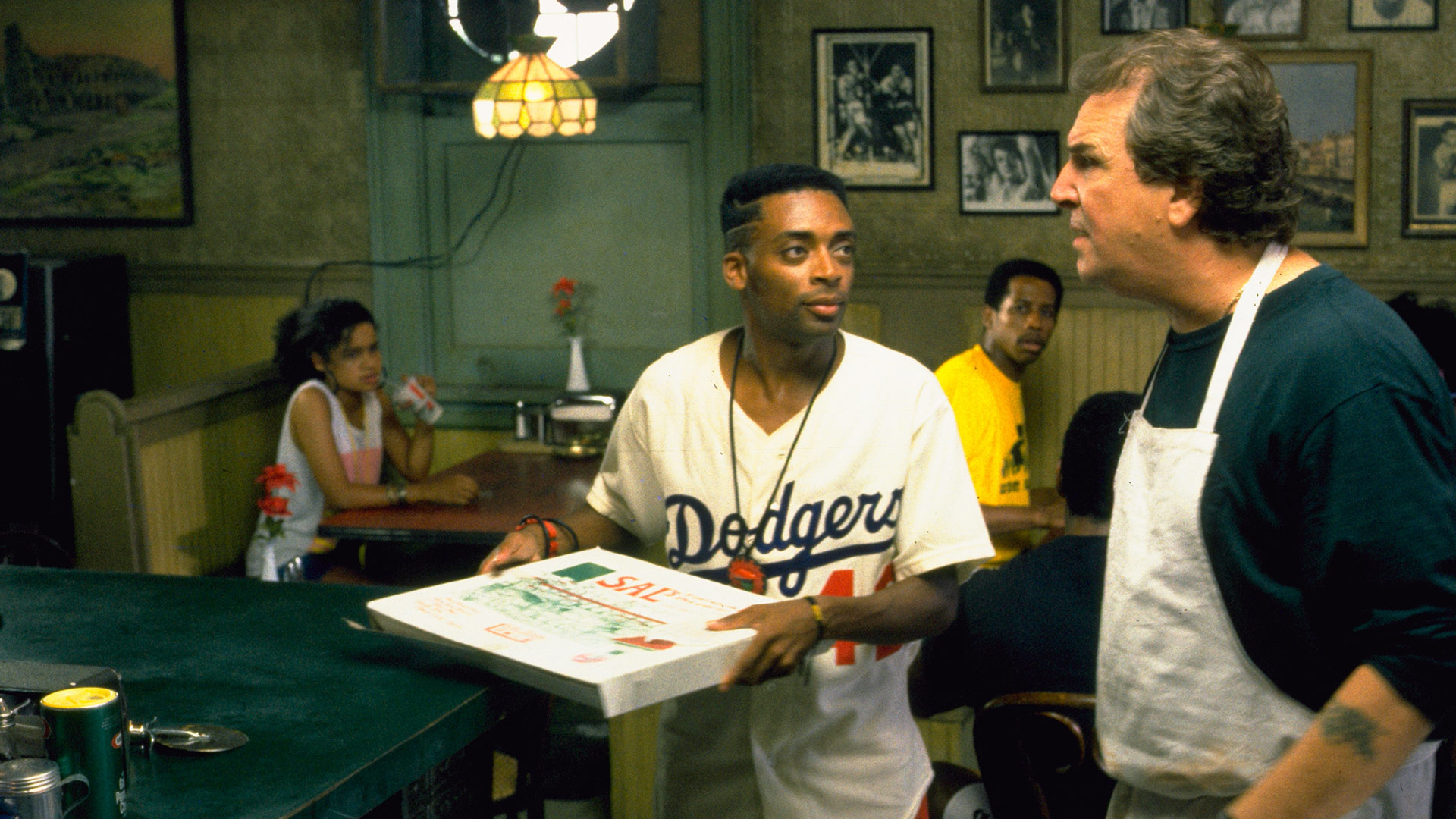 ‘DO THE RIGHT THING’ (1989), ©40 ACRES & A MULE FILMWORKS
‘DO THE RIGHT THING’ (1989), ©40 ACRES & A MULE FILMWORKS
‘Inside Man’ (2006) is yet another seminal work by Spike Lee—one of many, I might add. Packed with ridiculous amounts of tension and thrills, the film offers a glimpse into one of the greatest heists ever imagined by a screenwriter’s mind. With a stellar cast and exceptional performances under Mr Lee’s equally proficient direction, ‘Inside Man’ made history for Black Cinema, garnering plenty of awards along the way, including Movie of the Year at the AFI Awards and nods from both the AAFCA (African-American Film Critics Association) and BET Awards.
Antoine Fuqua’s ‘Training Day’ (2001) is such a rich work of cinema that it is rightfully referenced in film school studies today. It got Denzel Washington an Academy Award for his portrayal of a streetwise but crooked cop charged with training Ethan Hawke’s wet-behind-the-ears rookie. While the majority of Mr Washington’s thespian performances brought him forth as a model for righteousness and decency, his Alonzo offers a different take—a man who has tasted the dark side of power, who has forced fragile partnerships and alliances with the underbelly of city crime, and who cannot be ousted without losing everything, including his life.
Mr Fuqua’s directorial talent transforms the screenplay penned by David Ayers into an extraordinarily chilling drama about corruption within the ranks of those who are supposed to serve and protect.
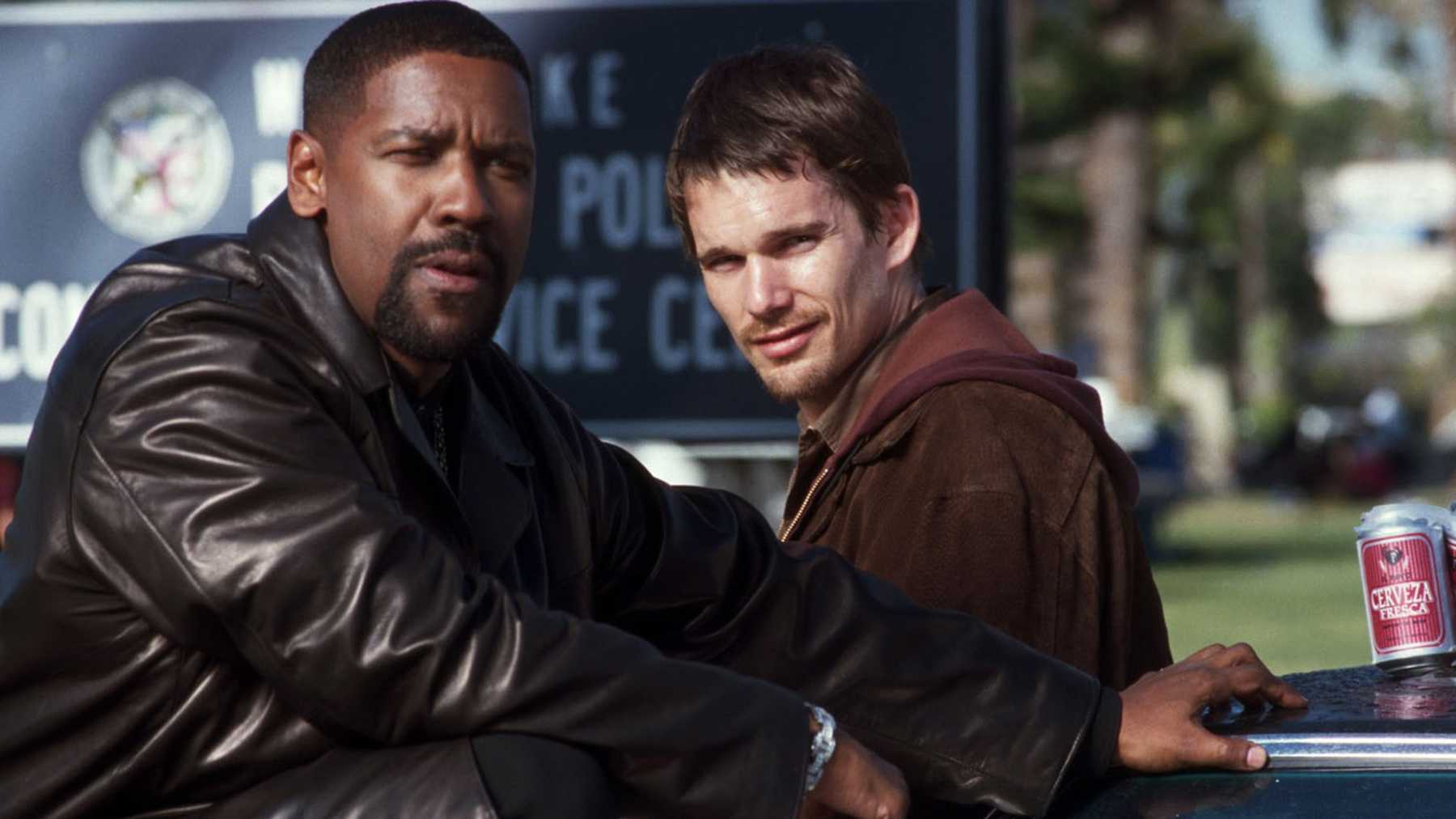 ‘TRAINING DAY’ (2001), ©WARNER BROS.
‘TRAINING DAY’ (2001), ©WARNER BROS.
Before he dazzled Hollywood with ‘Black Panther’, Ryan Coogler wrote and directed ‘Fruitvale Station’ (2013), which tells the story of Oscar Grant’s last day before he was shot in the back and killed by a police officer. This Sundance Grand Jury Prize and Audience Award winner delivers a punch in the gut with its opening—security footage of the real Oscar Grant, and with its ending—a clip of his daughter, now left without her father. It was a complicated project to undertake, given that there were living relatives that Mr Coogler and his lead, Michael B. Jordan, had to consider.
Oscar Grant is portrayed in a realistic manner. He is a flawed man trying to make better choices and aware of his responsibilities toward his family, which is why he decides to take the BART train on the last night of 2008 and of his life. ‘Fruitvale Station’ does not intend to offer any kind of remedy for the social issues of police brutality aimed particularly at Black Americans. It only recreates the final hours of a man who did not deserve to die the way he did.
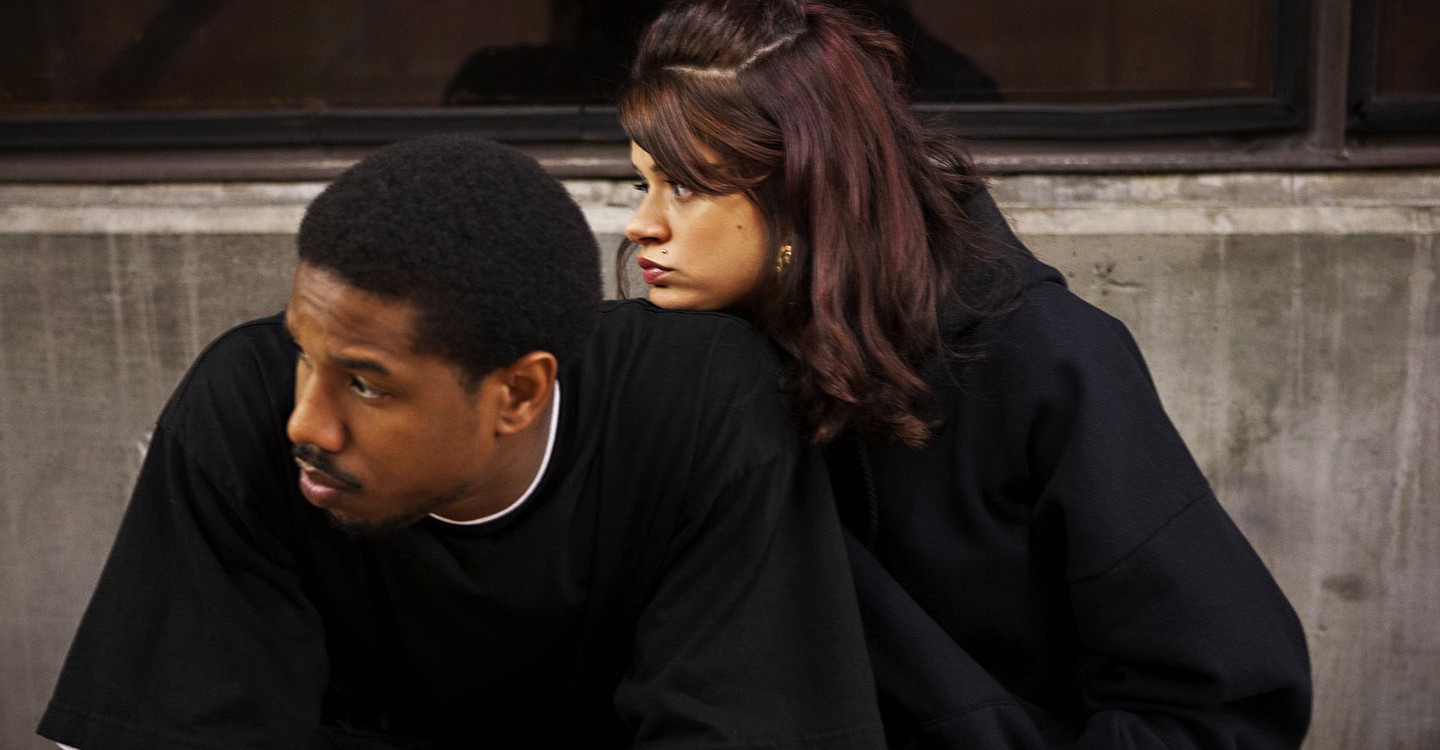 ‘FRUITVALE STATION’ (2013), ©FOREST WHITAKER’S SIGNIFICANT PRODUCTIONS
‘FRUITVALE STATION’ (2013), ©FOREST WHITAKER’S SIGNIFICANT PRODUCTIONS
Based on Sapphire’s novel ‘Push’ and directed by Lee Daniels, ‘Precious’ (2009) is a tour de force. Rarely do we see comedians sliding into dramatic roles with an ease that delivers staggering performances. Among them, I can think of Jim Carrey and Robin Williams. Yet there is also Mo’Nique, who is simply outstanding as the Harlem mother from hell who sexually abuses her illiterate teenage daughter, exquisitely portrayed by a young Gabourey Sidibe.
Sidibe’s Precious is a girl who has known nothing but trauma and misery, yet she finds kindness and freedom in others who help elevate her until she severs ties with her mother and becomes a better version of herself. Beyond Mo’Nique’s Oscar-worthy performance, however, what I also find memorable about this film is that it got Geoffrey Fletcher an Academy Award for the screenplay, making him the very first Black American to win a Best Screenplay Oscar (Original or Adapted).
 ‘PRECIOUS’ (2009), ©LIONSGATE
‘PRECIOUS’ (2009), ©LIONSGATE
‘Barbershop’ (2002) by Tim Story offers a softer take on black culture. It’s a light-hearted comedy drama that features Ice Cube, Cedric the Entertainer, Eve, and Michael Ealy—an easy-to-digest movie offering realistic conversations to which viewers have been glad to relate. Before there were talk-shows like ‘Meet the Press’, barbershops used to be great meeting spots for people to go and chat about pretty much everything while getting a haircut. Mr Story’s film follows a family-owned barbershop and those who are sewn into its very fabric, employees and customers alike. It registered impressive box office figures, enough to later release two sequels and a spinoff for Queen Latifah.
Few movies have rattled their audiences like Steve McQueen’s ‘Twelve Years a Slave’ (2014), based on the eponymous book written by Solomon Northup. The film, equal parts powerful and excruciating through its depiction of 19th century America and the superb performances of Chiwetel Ejiofor, Lupita N’yongo, and Michael Fassbender, tells the story of Solomon Northup. His abduction and bondage into slavery despite having been a legally free black man forms the core of this devastating account and it brings forth a troubling question for its Black American viewers. What would they do if they were forced into Mr Northup’s circumstances? Would they fight back with everything they’ve got, or would they become pliable as a means of self-preservation in a society designed to keep them down, like he did?
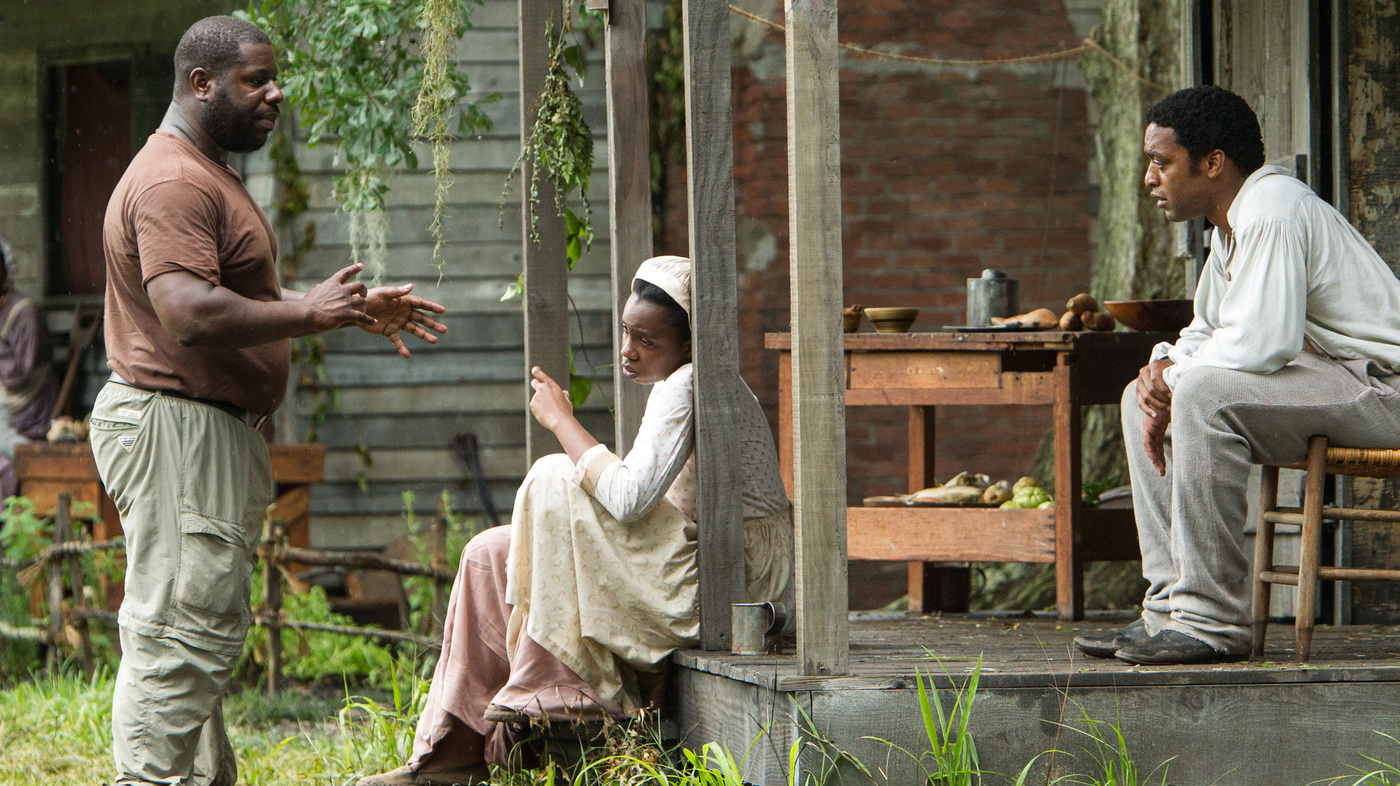 STEVE MCQUEEN AND CHIWETEL EJIOFOR ON THE SET OF ’12 YEARS A SLAVE’ (2013), ©JAAP BUITENDIJK/FOX SEARCHLIGHT PICTURES
STEVE MCQUEEN AND CHIWETEL EJIOFOR ON THE SET OF ’12 YEARS A SLAVE’ (2013), ©JAAP BUITENDIJK/FOX SEARCHLIGHT PICTURES
‘Moonlight’ by Barry Jenkins took the festival circuit by storm and won Best Motion Picture of the Year at the Oscars. For good reason, too. A character like Chiron had never been portrayed in Black American cinema before, thus proving that the range devised for black men in movies could spread wider and could offer new, enthralling dimensions. With only a couple of exceptions, few black characters had struggled with masculinity up to that point. Adding Naomie Harris and Mahershala Ali’s resplendent renditions (let us not forget that Mr Ali won an Academy Award for this role) only served to turn ‘Moonlight’ into a cinematic phenomenon and proof that black films have a lot more to give, still.
Prior to ‘Selma’ (2014), Ava Duvernay was already enjoying a rapid ascension among the filmmaking ranks of Hollywood. It was this biopic oeuvre that brought forth the massive reaches of her talent and vision. It is imperative to observe the sheer force of will that she exudes as a Black American woman in an otherwise mostly white industry.
‘Selma’ does more than just recount that epic march for voting rights that carried Martin Luther King Jr. from Selma to Montgomery, Alabama, however. It gives us the man behind the legend, a being of titanic dreams and complexities, whose faults and qualities are presented from multiple angles—a feat genially accomplished through David Oyelowo’s interpretation and Ms Duvernay’s directorial guidance.
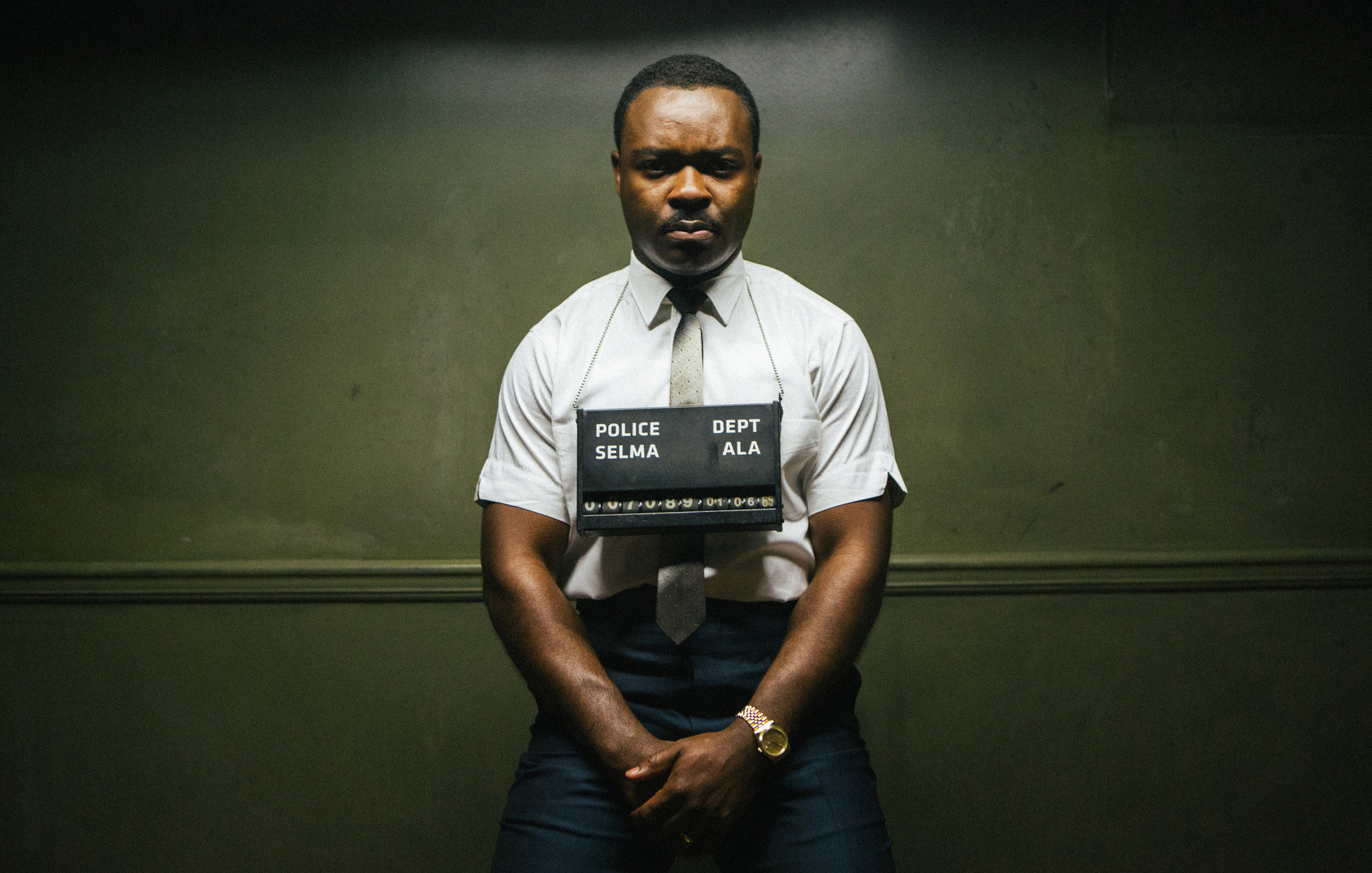 ‘SELMA’ (2014), ©PATHÉ
‘SELMA’ (2014), ©PATHÉ
F. Gary Gray had already done music video work with Ice Cube, Dr. Dre, and other rap artists of the era that saw the rise of N.W.A. before he took on the gargantuan challenge of telling their story in ‘Straight Outta Compton’ (2015).
Naturally, the end result had everything that the iconic rap group’s fans could wish for: N.W.A.’s permission to use their original music; fantastic performances from the three leads, one of them being none other than O’Shea Jackson Jr., who played the role of his father, Ice Cube; and the kind of energy that is not easily found nor easily forgotten. It was the U.S.’s number one film for three weeks in a row and held a stupefying box office figure of $200M, but it will be remembered not only as a commercial success, but also as the now-second highest-grossing music biopic—after ‘Bohemian Rhapsody’ (2019).
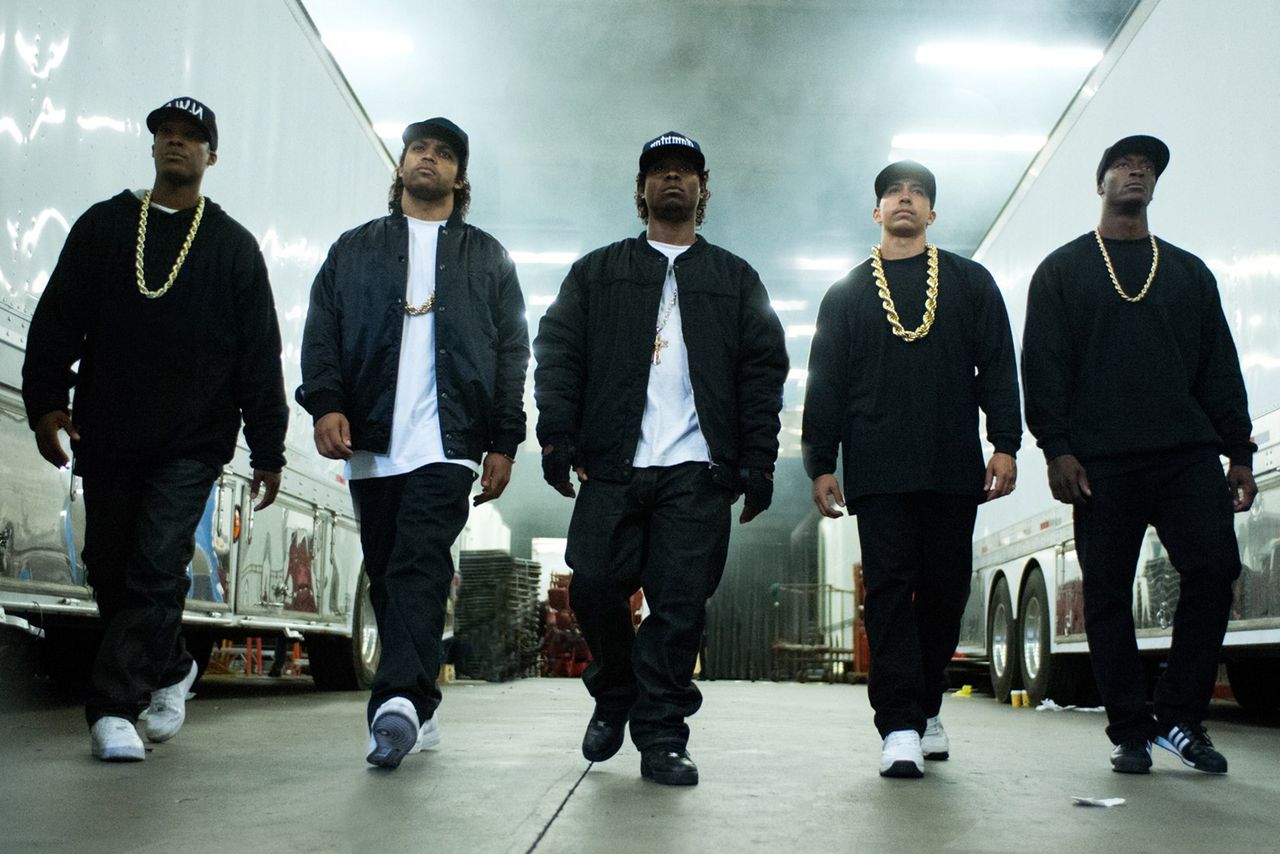 ‘STRAIGHT OUTTA COMPTON’ (2015), ©UNIVERSAL PICTURES
‘STRAIGHT OUTTA COMPTON’ (2015), ©UNIVERSAL PICTURES
Forty Years of Black Directorial Brilliance
Many have garnered praise and attention for their works in Black American cinema, though few have become powerhouse names with multiple titles under their belts.
Naturally, we have Spike Lee at the forefront. We’ve already touched on ‘Inside Man’ and ‘Do the Right Thing’, but those are only two of his most popular movies. Once he made his debut with ‘She’s Gotta Have It’ (1986), his first feature-length film, Mr Lee did not stop creating and telling cinematic stories with roots deeply sunk into African American culture in one form or another.
Through ‘Malcolm X’ (1992), he built a biographical profile of the authoritative and controversial Black Nationalist leader, following Malcom X’s rise from his early days as a small-time gangster to his ministry, his advocacy for the Nation of Islam and discourse for civil rights—though his approach was always more aggressive than Dr King’s. The esteemed director’s more recent foray into racial issues gives us ‘BlacKkKlansman’ (2018), which tells the true story of Ron Stallworth, a black police officer played by John David Washington who managed to infiltrate the local Ku Klux Klan branch in Colorado.
Known best for his studies of race relations, urban crime and poverty, and colourism issues within the black community, Spike Lee has earned his Academy Awards and Golden Globes nods for some of his works—mostly for ‘Do the Right Thing’. Finally, his Oscar win came in 2019 for Best Adapted Screenplay, which he shared with Charlie Wachtel, David Rabinowitz, and Kevin Willmott for ‘BlacKkKlansman’.
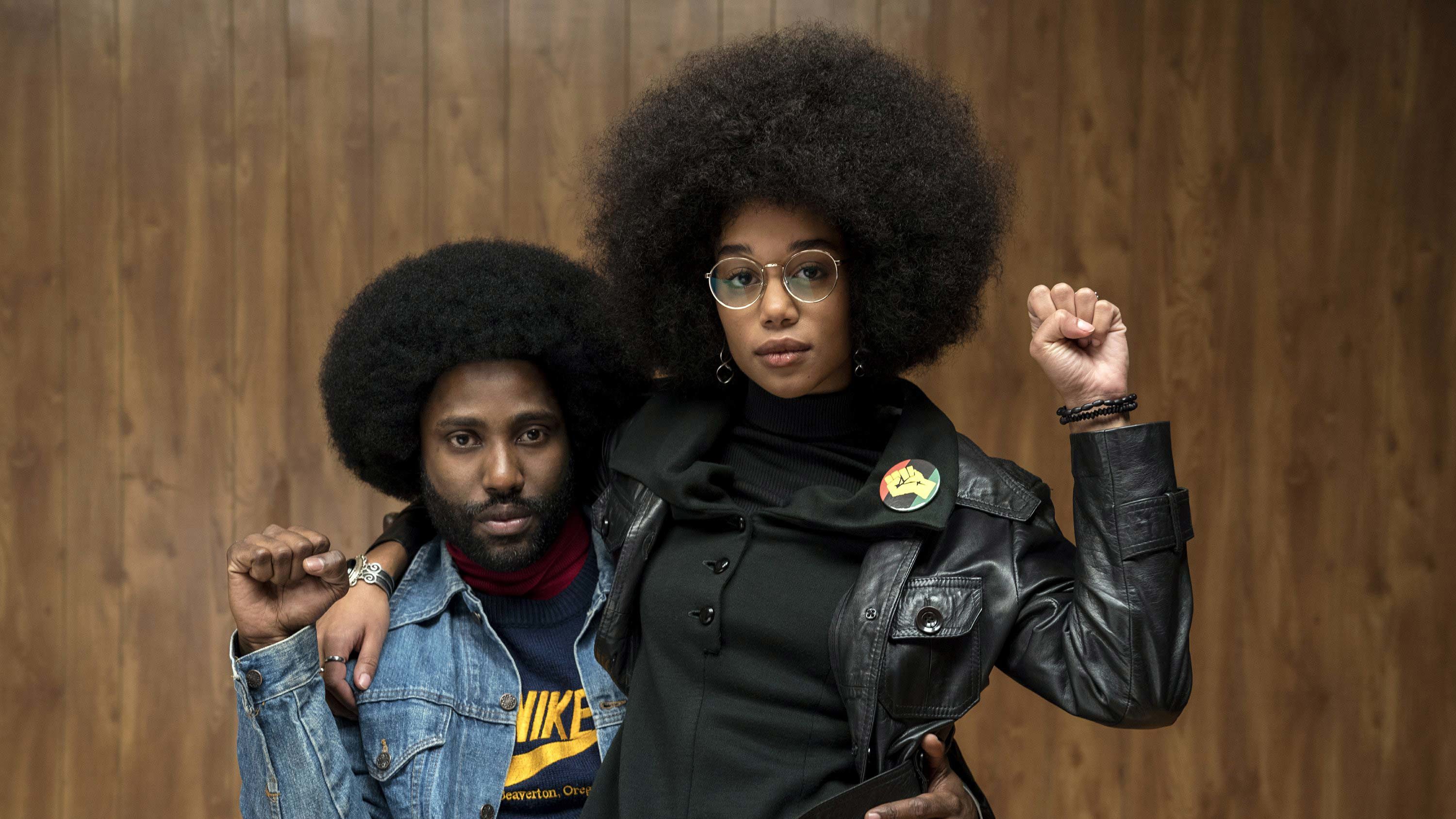 ‘BLACKKKLANSMAN’ (2018), ©FOCUS FEATURES
‘BLACKKKLANSMAN’ (2018), ©FOCUS FEATURES
John Singleton became a household name of prolific Black American cinema with Oscar-nominated ‘Boyz n the Hood’ (1991), leaving an indelible mark on the industry with other works of true depth such as ‘Poetic Justice’ (1993), starring Janet Jackson, Tupac Shakur, and Regina King, and ‘Shaft’ (2000), which gave us Samuel L. Jackson like nobody had ever seen him before. The film world lost him in 2019, but his legacy remains.
I, for one, remember his critique of American studios, in particular, regarding their refusal ‘to let African Americans direct black-themed films’ during an event at Loyola Marymount University, a speech which later became viral. ‘They ain’t letting the black people tell the stories’, he added, and for good reason. Great films have come out of Hollywood with Black Americans as the heroes and heroines, in projects helmed by white directors. The nuance and authenticity are lost, however, regardless of artistic quality. There is something that only those who live through a specific experience can add to make a story feel undeniably real.
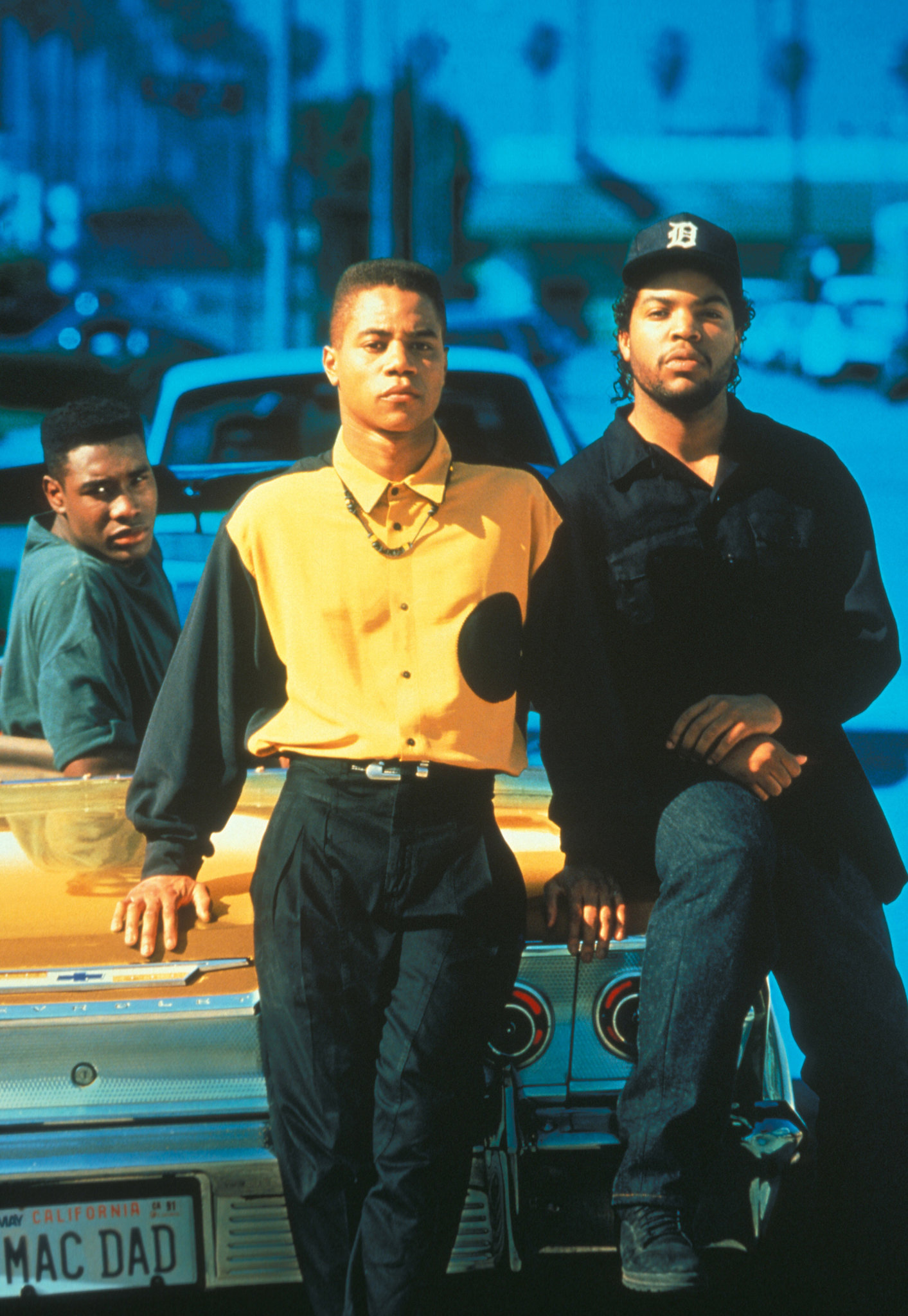 ‘BOYZ N THE HOOD’ (1991), ©COLUMBIA PICTURES
‘BOYZ N THE HOOD’ (1991), ©COLUMBIA PICTURES
Allen and Albert Hughes, better known as the Hughes Brothers, have become more popular recently across television and streaming audiences thanks to ‘The Defiant Ones’ (2017), a biographical documentary series that studies the business relationship between Dr. Dre and Jimmy Iovine, both heavy influences on contemporary culture. But before this Emmy-nominated project, the Hughes Brothers first garnered acclaim for ‘Menace II Society’ (1993) which despite having been frequently compared to ‘Boyz n the Hood’, it offers nothing downright pleasurable in its viewing experience. Unlike John Singleton’s signature piece, this Hughes Brothers’ showpiece is ugly and violent, painfully realistic and lacking in uplifting specks of hope. It pushes the viewers into wishing more from the world, since the characters clearly couldn’t.
They followed up with a slightly less bleak but just as troubling tale of black men who survived the Vietnam War, though not without emotional and psychological scars. ‘Dead Presidents’ (1995) approaches a rather difficult but necessary subject—the way in which the US government uses and abuses young men (in this case, especially black men) before it abandons them upon their return home. Pushed by PTSD, substance abuse, and the difficulties of providing for their families, these men who once fought for their country in the mosquito-infested jungles of Vietnam become criminals and spiral downwards until they land in prison. Few films have managed to incapsulate life after the war better than ‘Dead Presidents’.
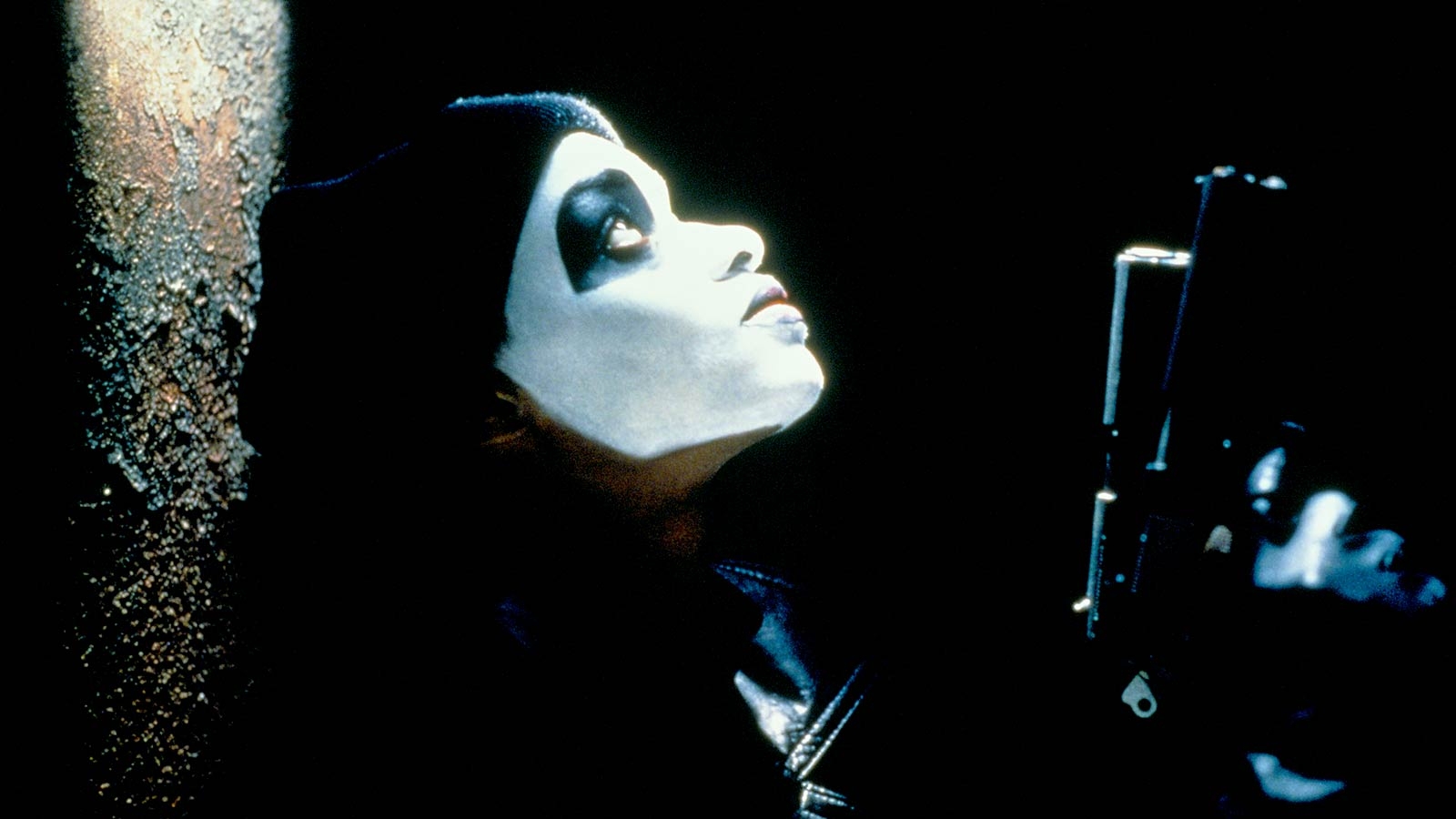 ‘DEAD PRESIDENTS’ (1995), ©CARAVAN PICTURES
‘DEAD PRESIDENTS’ (1995), ©CARAVAN PICTURES
There are plenty more Black American filmmakers who have left their own impressions onto the silver screen. F. Gary Gray made waves beyond ‘Straight Outta Compton’ with ‘Set It Off’ (1996) and ‘Friday’ (1995), the former a black-female-driven action piece featuring Jada Pinkett Smith, Vivica A. Fox, and Queen Latifah, and the latter a chilled comedy starring Ice Cube and Chris Tucker—both films illustrating the director’s versatility and ability to tackle a complex range of themes and genres whilst keeping his cast and screenplays black.
Gina Prince’s ‘Love & Basketball’ (2000) also deserves an honourable mention, splendidly split into quarters and unravelling like a basketball game that tells a story of… well, love and basketball at the centre of a complicated relationship between Omar Epps’s Quincy McCall and Sanaa Lathan’s Monica Wright. Allow me to applaud George Tillman Jr.’s ‘Soul Food’ (1997), too, as one of the first Black-American-led movies I remember watching, a tale of love and family and all the complications that come attached, set around the dinner table.
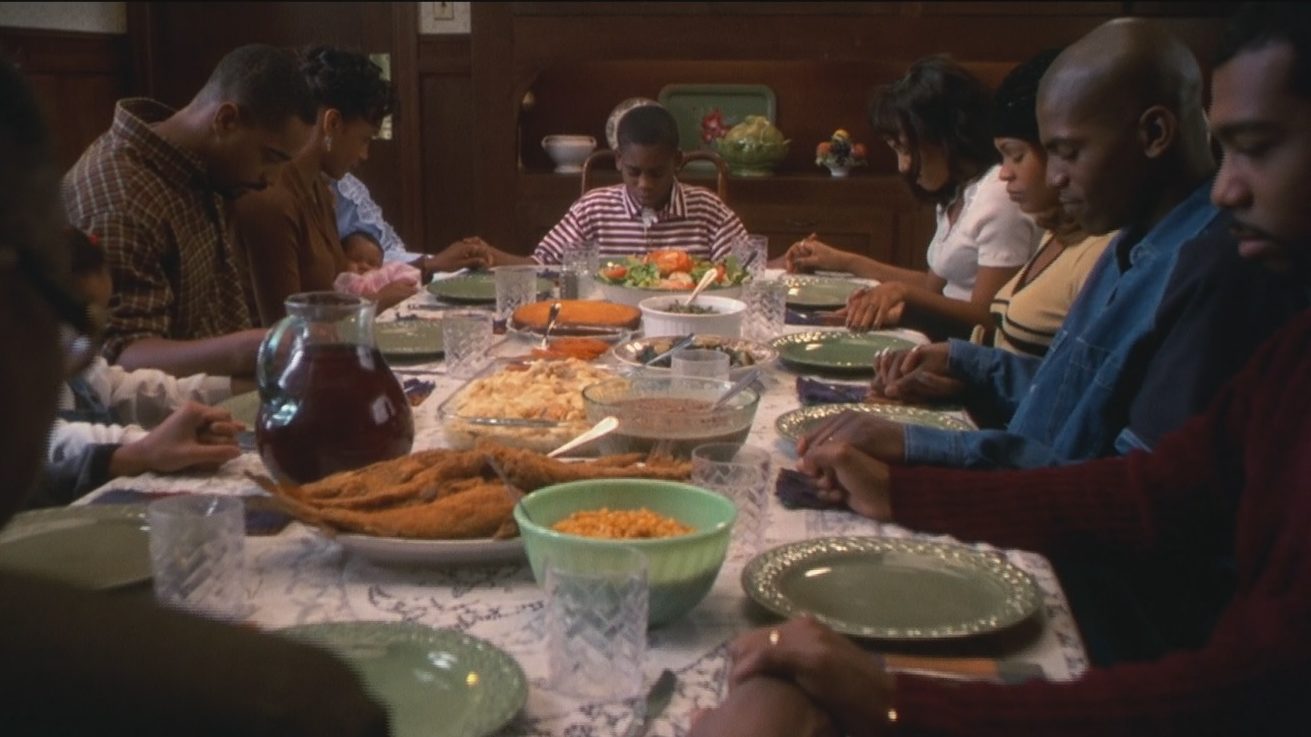 ‘SOUL FOOD’ (1997), ©FOX 2000 PICTURES
‘SOUL FOOD’ (1997), ©FOX 2000 PICTURES
And last, though certainly not least, a tip of the hat should go to Robert Townsend’s ‘The Five Heartbeats’ (1991), which earned a nomination for Outstanding Motion Picture from the Image Awards (NAACP). While its story is fictional, ‘The Five Heartbeats’ tells the familiar tale of Black American artists’ struggle during the ‘60s, at the climax of racial tensions in America. It carries twists of its own, however, with the singers’ personal demons threatening to shatter the troupe’s integrity in front of their growing audiences.
While hoping that the film industry will continue to grow, evolve, and embrace racial diversity and its potential, one can only look forward to what the future might hold for Black American cinema. There are some hard truths waiting to be told along with great stories.
Jules R. Simion
Jules is a writer, screenwriter, and lover of all things cinematic. She has spent most of her adult life crafting stories and watching films, both feature-length and shorts. Jules enjoys peeling away at the layers of each production, from screenplay to post-production, in order to reveal what truly makes the story work.
An Interview with Anna Drubich
Anna Drubich is a Russian-born composer of both concert and film music, and has studied across…
A Conversation with Adam Janota Bzowski
Adam Janota Bzowski is a London-based composer and sound designer who has been working in film and…
Interview: Rebekka Karijord on the Process of Scoring Songs of Earth
Songs of Earth is Margreth Olin’s critically acclaimed nature documentary which is both an intimate…
Don't miss out
Cinematic stories delivered straight to your inbox.
Ridiculously Effective PR & Marketing
Wolkh is a full-service creative agency specialising in PR, Marketing and Branding for Film, TV, Interactive Entertainment and Performing Arts.


